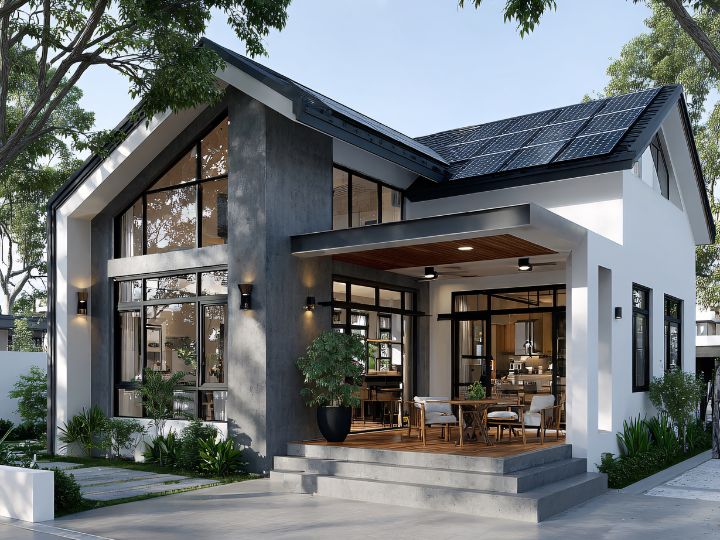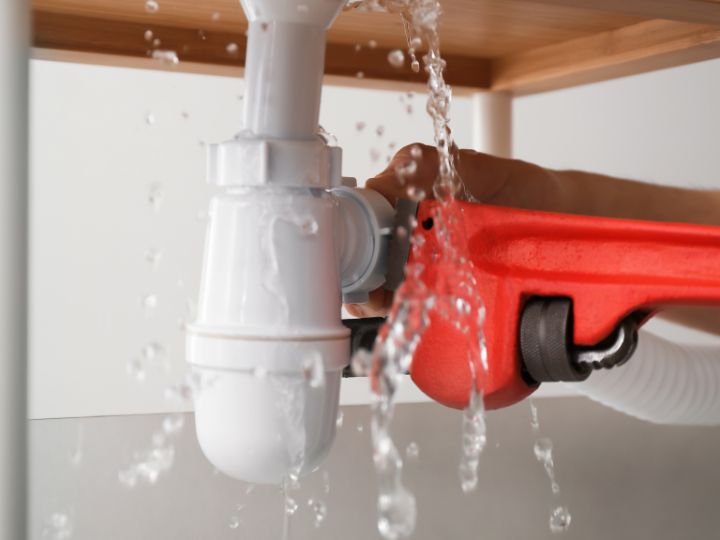
Dust Control Solutions: Remodeling Tips for Phoenix's Perpetual Battle

Living in Phoenix means accepting dust as a constant companion. Between the desert climate, frequent haboobs that can tower 3,000 feet high, and construction projects throughout the Valley, dust infiltration is an ongoing challenge for homeowners. When you add a remodeling project to the mix, dust control becomes not just important—it becomes essential for protecting your health, belongings, and sanity.
Dust control refers to practices aimed at minimizing or managing the dispersion of particulate matter into the air at construction sites and other areas. In Phoenix's unique environment, where dust storms can span 100 miles wide, effective dust control during remodeling requires a comprehensive strategy that goes far beyond simply opening windows or using basic drop cloths.
Phoenix's Unique Dust Challenges
Phoenix homeowners face a perfect storm of dust-related challenges. Haboobs happen because of the high and strong winds as a byproduct of a thunderstorm caving in. The cold front moves down at an unbelievable rate, pulling an unwieldy amount of dust and sand into the air. These massive dust storms can carry particles for miles, settling into every crevice of your home.
The Valley's dry climate, combined with frequent construction throughout the metro area, creates an environment where dust is constantly present in the air. Construction projects invariably disturb the soil, creating dust in the dry Arizona climate. A dusty job site can result in safety issues due to poor visibility. When you're already dealing with external dust infiltration, adding an interior remodeling project can quickly overwhelm your home's air quality.
Understanding Construction Dust Health Risks
Construction dust often includes particles from drywall, tile, and wood that, when inhaled, can aggravate respiratory conditions and allergies. In Phoenix, where many residents already deal with allergies from desert pollens and external dust, protecting indoor air quality becomes even more critical.
Silica dust itself causes lung disease and cancer with exposure over time, and it can develop within a few weeks after exposure. This is particularly concerning during tile removal or work involving concrete, stone, or masonry materials commonly found in Phoenix homes. The fine particles can remain airborne for hours, settling on surfaces throughout your home long after the work is completed.
For families with children, elderly residents, or anyone with respiratory sensitivities, implementing proper dust control measures isn't optional—it's essential for maintaining a healthy living environment during your remodeling project.
Essential Dust Containment Strategies
Creating Physical Barriers
One of the most effective methods for containing dust is using temporary plastic barriers, often called "Zipwalls." Picture them like a giant, transparent curtain sectioning off the construction area from the rest of your home. Professional-grade containment systems create airtight seals that prevent dust migration to other areas of your home.
Key components of effective containment include:
- 6-mil polyethylene plastic sheeting for creating dust barriers
- Zipwall systems with adjustable poles for quick setup without ladders
- Dust containment doors with zippers for easy access while maintaining seals
- Negative air pressure systems to direct airflow away from living spaces
Floor and Surface Protection
Carpet cover, or "carpet masking," is a go-to solution for home dust control during a renovation. In Phoenix homes, where many surfaces can be damaged by fine desert dust, protecting floors and furnishings is particularly important.
Essential protection strategies include:
- Self-adhesive carpet protection that withstands heavy foot traffic
- Antistatic plastic sheeting for areas with electronic equipment
- Sticky mats at entry and exit points to prevent tracking dust between rooms
- Furniture covers or complete removal of sensitive items from work areas
Advanced Air Filtration Systems
HEPA filters are crucial in dust control because they capture the tiny, often invisible particles that contribute to poor indoor air quality and settle on surfaces. Given Phoenix's baseline dust levels, HEPA filtration becomes even more critical during remodeling.
Professional air management includes:
- HEPA air scrubbers that capture 99.97% of particles as small as 0.3 microns
- Negative air machines that create pressure differentials to contain dust
- Strategic placement of filtration units to maximize effectiveness
- Continuous operation during work hours and beyond
Room-Specific Dust Control Approaches
Kitchen Remodeling Dust Management
Kitchen remodels often involve the most dust-generating activities: cabinet removal, countertop demolition, and tile work. Containing dust within the work area is essential for protecting the rest of your home.
For kitchen remodeling projects, create a sealed environment by:
- Designating one entry/exit point with double plastic barriers
- Sealing all HVAC vents in the work area
- Using window fans to create negative air pressure
- Protecting adjacent dining and living areas with plastic sheeting
Bathroom Renovation Dust Control
Bathroom remodels present unique challenges, particularly during tile removal and plumbing work. DustRam® on the other hand not only filters the dust using HEPA filters but we also capture and contain 99.9995% of the carcinogenic dust.
Essential bathroom dust control measures:
- Complete containment of the bathroom space
- HEPA-filtered dust extraction during tile removal
- Protection of adjacent bedrooms and hallways
- Careful management of debris removal routes
Whole-Home Remodeling Strategies
For complete home remodeling projects, dust control requires a comprehensive site management approach. Construction dust containment is the process of separating an area with a barrier, such as plastic sheeting, to reduce dust or other airborne contaminants from spreading throughout the jobsite.
Working with Your HVAC System
Phoenix homes rely heavily on air conditioning, making HVAC protection crucial during remodeling. If possible, avoid running the HVAC system during construction. Cover any registers in the work area by taping kraft paper in place. If you must run the system, replace your filters weekly during the project.
HVAC protection strategies:
- Seal all registers in work areas with plastic and tape
- Consider temporary shutdown of central air during heavy dust-generating work
- Install higher-grade filters in your system during construction
- Schedule professional duct cleaning after project completion
Pre-Project Planning for Success
A well-conceived dust plan outlines the strategies and systems that will be used to contain dust during the renovation. Effective planning is particularly important in Phoenix, where external dust sources can compound remodeling dust issues.
Your dust control plan should address:
- Barrier placement and materials for maximum containment
- Air filtration equipment sizing and placement
- Daily cleaning protocols to prevent dust accumulation
- Material staging areas to minimize dust generation
- Weather considerations for outdoor work and material delivery
Professional vs. DIY Dust Control
While basic dust control measures can be implemented by homeowners, professional-grade containment often provides better results, especially for larger projects. If the contractor didn't initially include dust control measures like Zipwalls, floor protection, or air scrubbers in their scope of work or quote, understand that these items may be considered an additional service.
When to consider professional dust control:
- Projects involving tile or concrete cutting
- Home additions with structural modifications
- Multi-room renovations lasting several weeks
- Homes with family members who have respiratory sensitivities
Daily Maintenance and Monitoring
Effective dust control requires strategy, timing, and the right equipment. Daily maintenance ensures your containment systems remain effective throughout your project.
Essential daily practices:
- Inspect barrier integrity and repair any tears immediately
- Empty vacuum systems and replace filters as needed
- Wipe down surfaces in adjacent areas daily
- Monitor air pressure differentials in contained areas
- Maintain "clean" and "dirty" pathways for workers
Post-Construction Cleanup Strategy
Even with excellent dust control, some particles will escape containment. Phoenix's dry climate means dust settles quickly and can be easily redistributed if not properly addressed.
Comprehensive cleanup includes:
- HEPA vacuum cleaning of all surfaces, including walls and ceilings
- Professional duct cleaning if HVAC systems were operational
- Deep cleaning of adjacent rooms and furniture
- Air purifier operation for several days after completion
- Professional carpet cleaning if carpeted areas were exposed
Choosing the Right Contractor for Dust Control
When selecting a contractor for your Phoenix remodeling project, dust control capabilities should be a key consideration. If you're hiring a contractor, insist on seeing their dust-control plan as part of the bidding process. A reputable contractor should have a comprehensive approach to dust management.
Questions to ask potential contractors:
- What specific dust control measures are included in your standard process?
- Do you use HEPA-filtered equipment for dust-generating activities?
- How do you protect HVAC systems and adjacent living spaces?
- What additional costs might be involved for enhanced dust control?
- Can you provide references from recent Phoenix-area projects?
The Contractor Guyz understand the unique challenges Phoenix homeowners face with dust control during remodeling projects. Their comprehensive approach to design and construction includes detailed dust management planning from project start to finish. Whether you're planning a kitchen remodel, bathroom renovation, or complete home transformation, professional dust control can make the difference between a stressful experience and a successful project.
Technology and Innovation in Dust Control
The dust control industry continues to evolve, with new technologies making containment more effective and efficient. These systems often include a pre-filter followed by a HEPA filter and sometimes an activated carbon filter to absorb odors and volatile organic compounds (VOCs).
Recent innovations include:
- Smart air monitoring systems that track particle levels in real-time
- Automated negative air machines that adjust based on conditions
- Advanced barrier materials that provide better sealing with easier installation
- Integrated dust collection tools that capture particles at the source
Seasonal Considerations in Phoenix
Phoenix's dust control challenges vary by season. Sandstorms or haboobs in Phoenix, Arizona, are unavoidable, but you can control how you handle the wind blowing loose dust and dirt. Monsoon season (typically July through September) brings increased dust storm activity that can complicate remodeling projects.
Seasonal planning considerations:
- Summer months: Increased air conditioning use requires careful HVAC protection
- Monsoon season: Enhanced exterior protection needed during dust storms
- Winter months: Lower humidity can increase static electricity and dust distribution
- Spring: Increased wind activity may require additional exterior barriers
Cost-Benefit Analysis of Professional Dust Control
While professional dust control systems represent an additional upfront cost, the benefits often far outweigh the expense, particularly in Phoenix's challenging environment.
Benefits of professional dust control:
- Health protection for family members with respiratory sensitivities
- Property protection preventing damage to furnishings and electronics
- Time savings through reduced post-construction cleanup
- Project efficiency by maintaining visibility and air quality
- Compliance with local dust control regulations
Any activity capable of generating fugitive dust (such as construction, earthmoving, demolition, or weed removal), regardless of the size of the site, must comply with Rule 310 and control sources of dust. Professional general contractors understand these requirements and can ensure your project meets all local regulations.
Making Dust Control a Priority
Living in Phoenix means dust is always a consideration, but it shouldn't prevent you from creating the home of your dreams. With proper planning, professional-grade containment systems, and the right contractor partnership, you can successfully navigate any remodeling project while protecting your family's health and your home's condition.
The key is recognizing that dust control isn't an optional add-on—it's an essential component of any successful remodeling project in the Phoenix area. By controlling dust, the air quality around the construction site is significantly improved, benefiting workers and nearby communities.
Whether you're planning a simple bathroom refresh or a complete home transformation, investing in proper dust control measures will ensure your project proceeds smoothly and your family can enjoy the results for years to come. Contact a professional remodeling contractor who understands Phoenix's unique challenges and has the experience to deliver exceptional results while keeping your home clean and healthy throughout the process.
Latest Blogs
Transform your dream home into reality with our premier renovation services!
Book a call with us today and let's create the perfect space tailored just for you.

.svg)
.svg)



